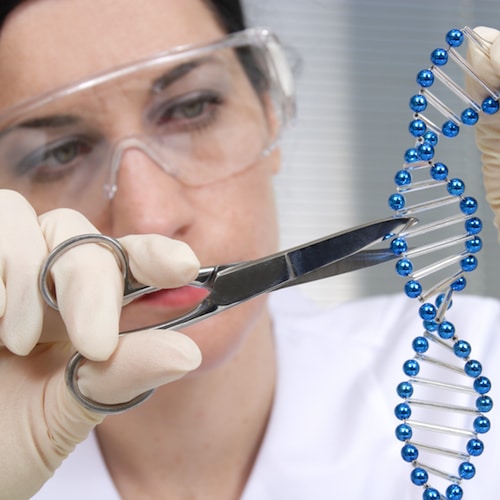Roadmap for Success in the CRISPR/Cas9 Market
Rarely in the scientific realm does a niche technique explode into a viable market worth billions of dollars over just a handful of years. When it does, the chaos that ensues is driven by the scrambling of life science product and service providers who vie with each other to secure market share. The market for CRISPR/Cas9 genome editing is no exception to the rule. Since its advent in the mid-2000s, the technique has continued to generate interest as more and more researchers adopt the technique. After being named the breakthrough of the year by AAAS in 2015, use of the technique as surged to unprecedented heights — and it shows no indication of slowing.
Given the ever-changing nature of the CRISPR/Cas9 landscape, staying up to date on customer purchasing trends is the only way to stay ahead of the curve. Through the deep insight provided by the 2017 Market for CRISPR/Cas9 Genome Editing Products, suppliers can position themselves to increase their market share by listening to the most important voice of all— that of the customer.
BioInformatics LLC’s latest report on the CRISPR/Cas9 market includes customer-sourced insight on a variety of highly pertinent topics, including research objectives, experimental designs, product uses and preferences, future needs, laboratory spending, drivers of customer satisfaction, brand loyalty switching behavior, and much more.
Catalog Breadth and Customer Satisfaction
The breadth of applications for CRISPR/Cas9 has spawned an enormous catalog of products and services offered by suppliers. In a crowded market, differentiating yourself with novel Cas9 variants is key to garnering attention, but so is establishing a comprehensive product catalogue. Indeed, according to our research, the breadth of product offering is a key driver of user satisfaction, right up there with company reputation and timeliness of delivery. If there is one thing researchers want, it’s for their primary supplier to be a one-stop-shop for their CRISPR/Cas9 needs.

Supplier Attributes That Drive Customer Satisfaction
An example of one company that recognizes this fact is Horizon Discovery. In July, the company agreed to acquire Dharmacon from GE for $85 million. The offer consisted of $50 million in cash and $35 million in equity consideration, giving GE a 9% holding in Horizon Discovery. Dharmacon provides RNAi products, CRISPR reagents and arrayed libraries. “Through the combination of complementary technology, product portfolios and manufacturing capabilities, the acquisition of Dharmacon by Horizon creates an emerging leader in the application of gene-modulation technologies in life science research,” stated Horizon Discovery CEO Darrin Disney. “We expect that the brand recognition, and sales, marketing (including eCommerce) and distribution channel particularly in the academic community, as well as intimate relationships in biotech and pharma that Dharmacon will bring to Horizon, will transform the opportunity for Horizon’s product portfolio as well as generate attractive cost-base synergies.”
Thermo Fisher Scientific’s GeneArt CRISPR line of products has made it the leading commercial vendor in the CRISPR market. Their product catalog includes everything from nuclease mRNA to all-in-one plasmid kits. Thanks to MilliporeSigma’s expansive product offerings that include positive control plasmids, Cas9 nickase mRNA and CRISPR lentiviral tools, it too has become a leader in the market.
Aside from the industry giants, a multitude of smaller companies have entered into the CRISPR/Cas9 market since its advent. Non-profit AddGene is highly focused and offers a plasmid repository for scientists to use and share, making them a widely used brand. Indeed, the market for CRISPR/Cas9 products and services is very fragmented with numerous small companies controlling only 8% or less share-of-wallet, yet collectively represent over 50% of the entire market.
Brand Loyalty and Switching Behavior
In such a competitive environment, suppliers must invest heavily in customer satisfaction in order to maintain their foothold, let alone increase their market share. Creating brand ambassadors, customers who actively promote your products to their colleagues, is one of the surest methods of winning over new customers. Among suppliers of CRISPR/Cas9 products and/or services, Thermo Fisher Scientific (30.9) and New England Biolabs (31.5) have the highest net promoter scores.
But what drives switching behavior? What key factors may turn a loyal customer into a convert for another brand? Overall, 19% of those surveyed reported they were planning to switch their primary supplier of CRISPR/Cas9 products in the next 12 months. Unsurprisingly, lower cost is the single most influential driver of switching behavior. However, is a fast changing market such as this, the number two reason for switching is to gain access to more innovative technology. Another interesting observation we made was that brand reputations forged over many years carry over into new market segments like CRISPR/Cas9. For example, pharma/biotech scientists using CRISPR/Cas9 are twice as likely than their academic counterparts to say they’ll switch to Agilent – a brand often associated with advanced, and expensive, analytical instrumentation.
The market for CRISPR/Cas9 genome editing is unique in the rate at which it is expanding. We’re projecting that the market for CRISPR products and services will grow at astonishing 45% over the next five years. For the third year in a row, we have surveyed hundreds of scientists using CRISPR/Cas9 to examine the:
- Market’s size and growth out to 2021 by region and market segment
- Use of genome editing tools
- Experimental design
- Guide RNA and Cas9 protein design, delivery and software
- Future needs
- Brand awareness and usage
- Customer experience with leading CRISPR/Cas9 suppliers
- Customer loyalty and switching behavior
- Current and projected lab spend on CRISPR/CAS9 products and services
- Supplier “share-of-wallet”
As new innovations continue to roll out, suppliers must take a wide stance in an array of key areas in order to retain their customers and secure new ones. Innovative technology, cost effectiveness, technical support, and product catalogue diversity all come into play. In order to understand how each of these factors and more influence customer behavior, download an executive summary of the 2017 Market for CRISPR/Cas9 Genome Editing Products.





